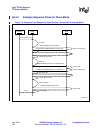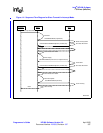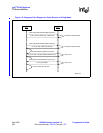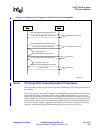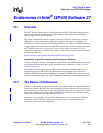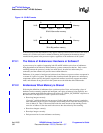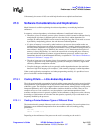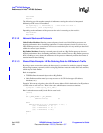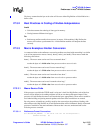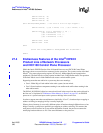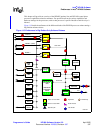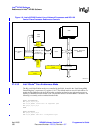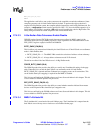
Intel
®
IXP400 Software
Endianness in Intel
®
IXP400 Software
April 2005 IXP400 Software Version 2.0 Programmer’s Guide
344 Document Number: 252539, Revision: 007
Little:0x8
Big:0x0
The following provides another example of endianness causing the code to be interpreted
differently on BE versus LE machines:
int myString[2] = { 0x61626364,0}; /* hex values for ascii */
Printf(“%s\n”, (char *)&myString);
Depending on the endianness of the processor the code is executing on, the result is:
Little:“dcba”
Big:“abcd”
27.3.1.2 Network Stacks and Protocols
Little-Endian Machines: Running a network protocol stack on a Little-Endian processor can
degrade performance due to formatting translation. If a network protocol stack is to be run on a
Little-Endian processor, at run time it will have to reorder the bytes of every multi-byte data field
within the various layers' headers.
Big-Endian Machines: Running a network protocol stack on a Big-Endian processor does not
degrade performance due to formatting translation. If the stack will run on a Big-Endian processor,
there is nothing to worry about; the endianness of the processor inherently matches the format of
standard network data ordering.
27.3.1.3 Shared Data Example: LE Re-Ordering Data for BE Network Traffic
By using a macro conversion routine, the data access is re-ordered as needed to properly interpret
data moving between a network (which is using Big-Endian or network order) and a host machine,
which may be Little-Endian.
Basic Assumptions:
• TCP/IP defines the network byte order as Big-Endian.
• Little-Endian machines must byte swap accesses to 16-/32-bit data types (IP address,
checksum, etc.).
Example: We want to assign the value of the IP source address field in the header of an IP packet to
a 32-bit value we will call “src.” Here is the code, which features a macro to translate.
u_long src = ntohl(ip->ip_src.s_addr);
Here is what the macro ntohl() looks like in actual code:
–ntohl()
{
#if (_BYTE_ORDER == _BIG_ENDIAN)
#define ntohl(x) (x)
#else
#define ntohl(x)((((x) & 0x000000ff) << 24) | \
(((x) & 0x0000ff00) << 8) | \
(((x) & 0x00ff0000) >> 8) | \
(((x) & 0xff000000) >> 24))
#endif
}



